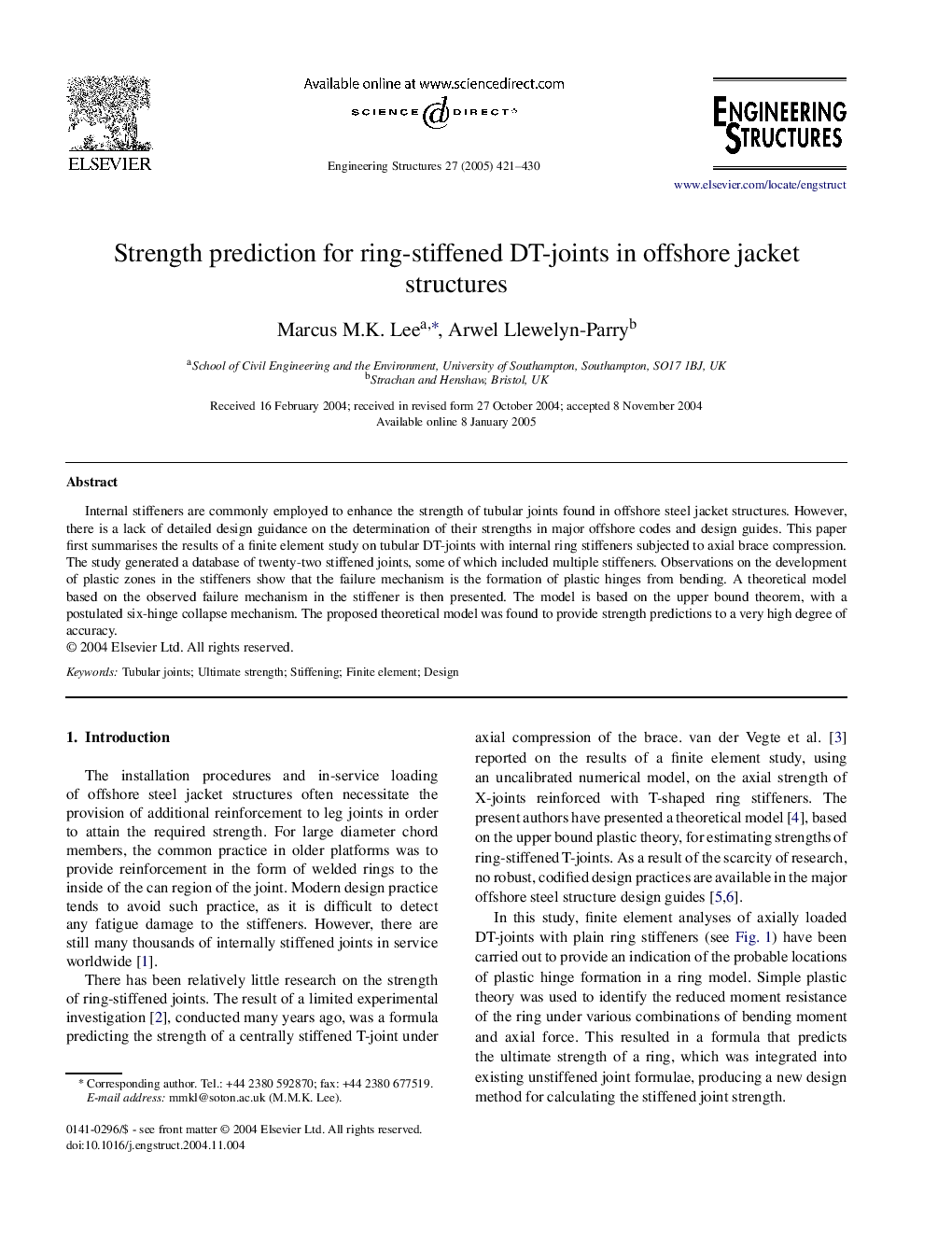| Article ID | Journal | Published Year | Pages | File Type |
|---|---|---|---|---|
| 10287321 | Engineering Structures | 2005 | 10 Pages |
Abstract
Internal stiffeners are commonly employed to enhance the strength of tubular joints found in offshore steel jacket structures. However, there is a lack of detailed design guidance on the determination of their strengths in major offshore codes and design guides. This paper first summarises the results of a finite element study on tubular DT-joints with internal ring stiffeners subjected to axial brace compression. The study generated a database of twenty-two stiffened joints, some of which included multiple stiffeners. Observations on the development of plastic zones in the stiffeners show that the failure mechanism is the formation of plastic hinges from bending. A theoretical model based on the observed failure mechanism in the stiffener is then presented. The model is based on the upper bound theorem, with a postulated six-hinge collapse mechanism. The proposed theoretical model was found to provide strength predictions to a very high degree of accuracy.
Related Topics
Physical Sciences and Engineering
Earth and Planetary Sciences
Geotechnical Engineering and Engineering Geology
Authors
Marcus M.K. Lee, Arwel Llewelyn-Parry,
